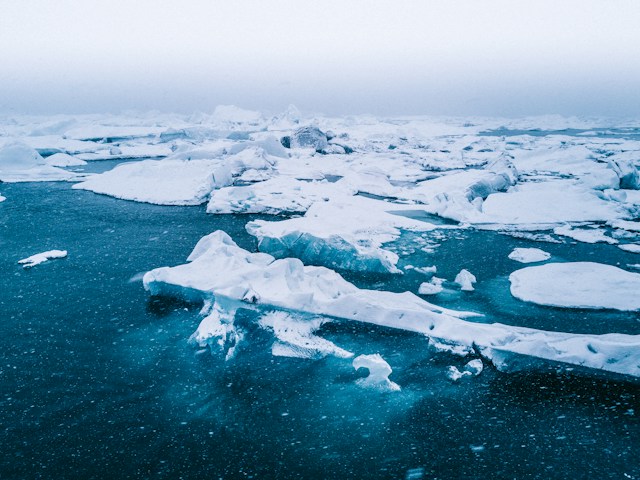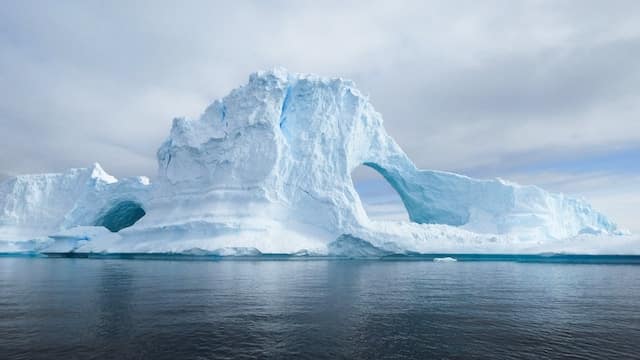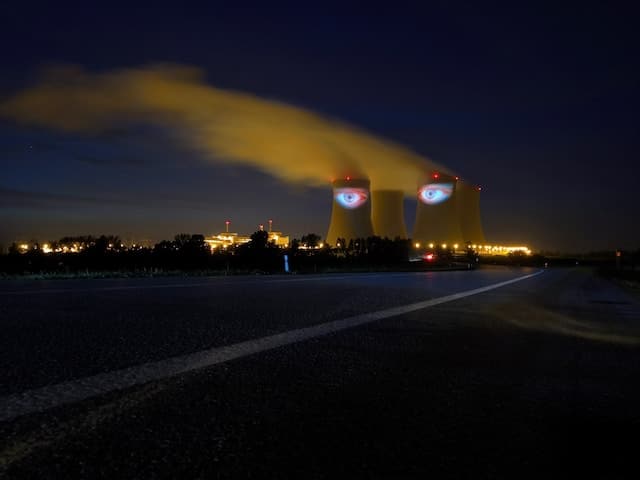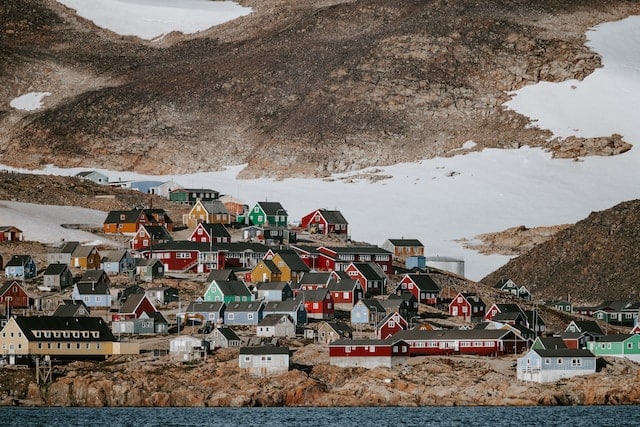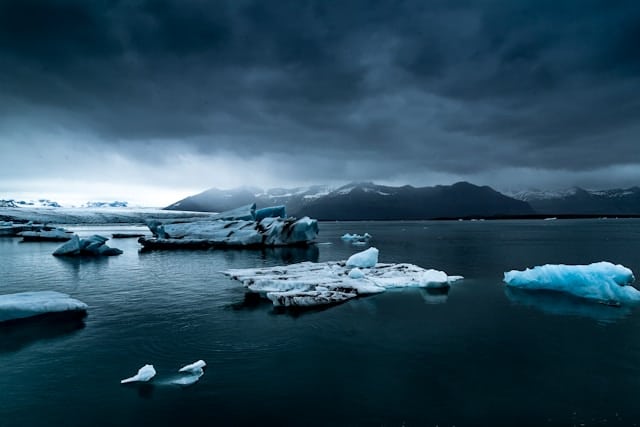
The Fastest Warming on Earth
By Robert Hunziker
In the High Arctic scientists discovered million-year-old methane (CH4) trapped under some of the world’s mightiest glaciers detected via unprecedented groundwater springs. Analyses of 123 springs found CH4 in all but one. As the massive glaciers recede, space opens at the edge of permafrost, releasing ancient methane. This is one more totally unexpected global warming headache.
Methane detected in the High Arctic puts a big hole in the Global Methane Pledge of more than 100 countries that agreed to cut emissions 30% by 2030. It’s an add-on that nobody knows how to deal with.
The High Arctic location is Svalbard, Norway (pop. 2,642) which is the fastest warming region of the planet only 700 miles from the North Pole. It’s ironic that the fastest warming is the farthest northern human outpost, deep into the Arctic North.
“On the Dot with David Schechter,” CBS News released a 45-minute film December 4th, 2023, documenting the warmest place on Earth: Ancient Methane Escaping from Melting Glaciers Could Potentially Warm the Planet Even More.
The film is noteworthy for its elegant beauty of landscape and simplicity of explaining a very complex climate system. With a soft tell-all, David Schechter skillfully interviews climate scientists at the top of the world, thus revealing what every world citizen should be aware of, the inescapable conclusion that climate change is far and away our biggest threat, a menacing transformation of Earth’s climate system that may, or may not, be too late to halt or reverse depending upon whom Schechter interviewed at any given sequence of the film.
Nevertheless, in a very straightforward easy-to-understand manner, the underlying message of the film is a climate system that has radically changed into a threatening monster filled with sudden unforeseen risks and ultimately the potential of a metaphoric runaway freight train barreling down a mountainside. The risks are only too evident, prompting a very straightforward question: Is it too late?
The answer found in the film is yes and no, depending.
Radical temperature changes are at the core. According to the film: Winters in the US are 3.7°F warmer than a couple of decades ago. In sharp contrast, Svalbard is a nerve-rattling 13.6°F warmer, bringing in its wake bigger and more frequent avalanches and landslides than ever before whilst simultaneously massive floods, massive drought, and massive wildfires clobber ecosystems thousands of miles away in Europe, in North America, in China, throughout the world. Everything with climate change is now on a massive scale. This is different than the past.
Wide-ranging climate change was beyond anything Svalbard was prepared for, e.g., homes destroyed by avalanches. Subsequently, Svalbard has been adapting by erecting avalanche barriers and walls.
The Ny-Alesund Research Station based in Svalbard is where scientists from around the world gather to study the High Arctic. It’s the world’s northern-most research facility with 35 year-round residents swelling to over 100 scientists that fly in from around the world during summer months when sunlight is 24/7.
A sculpture of renowned Arctic explorer Roald Amundsen (1872-1928) greets visitors at the centre of Ny-Alesund.
Jack Kohler, glaciologist, Norwegian Polar Institute, has studied glaciers in the region for 27 years… a significant glacier of his focus has retreated 4 kilometers over his tenure. At the water’s edge, the glacier is as tall as a 15-story building and 2 miles wide.
Kohler says colleagues throughout the world are seeing similar effects of climate change: (1) it’s warming a lot (2) there is considerably more melt (3) there’s no compensating increase in precipitation (4) winter snow season is shrinking because of a rapid increase in temperature. Indeed, it is an unnerving worldwide phenomenon.
At the heart of the global warming issue, according to Jack Kohler: “It’s happening really fast!”
The worldwide impact of sea water rise will be on the march. Accordingly, at current melt rates, it’s estimated sea-level rise in the US over the next 30 years will increase 10-14 inches on the East Coast, 14-18 inches on the Gulf Coast, and 4-8 inches on the West Coast. Florida is already seeing a troublesome impact, raising streets by 1-3 feet in Miami Beach. High tides become high floods.
The High Arctic is also home to Zeppelin Observatory at the top of Mount Zeppelin manned by Ove Hermansen, senior scientist, Norwegian Institute for Air Research. Super sensitive equipment at the mountain top measures gases in the atmosphere. Zeppelin Observatory coordinates its findings with a network of worldwide observatories, e.g., samples sent to Boulder, Colorado, National Center for Atmospheric Research. CO2 is 50% above pre-industrial since the 1980s with methane CH4 up 165%. If such growth rates continue, all bets are off for a global warming soft landing, more likely an overheated planet, eliminating human comfort zones across equatorial regions, and beyond.
Longyearbyen is the administrative centre for Svalbard where Anna Sjoblom serves as a meteorologist at the University Center in Longyearbyen. In her view, the Arctic is “the refrigerator or freezer for the rest of the world” but unfortunately thawing way too fast, as global warming works double-time radically distorting the crucial jet stream at 20,000-40,000 feet altitude that, in turn, negatively impacts the entire Northern Hemisphere with atmospheric rivers and stationary heat waves that do not let up, throwing the climate system for a loop. According to Sjoblom: “We are getting a new type of normal in the world that nobody is ready for.”
Dr. Andy Hodson, glaciologist at University Center Svalbard has linked rapid disappearance of glacial ice to release of methane from deep underground. Glacial retreat is the driver of methane gas emitting via unprecedented pools of water on surface where none existed before. In the central region underground springs bring CH4 to surface as 123 of 124 streams were found with methane. As a result, this increases the risks of a global warming breakout, conditions are there to impact global warming far beyond current expectations, such behavior is now underway.
Svalbard’s scientists are witnessing the fastest ever climate change. For some of them, it seems to be “too late.” Yet, for others, after experiencing the world’s most rapid rate of global warming, a sense of urgency “to do something” overwhelms. They can only hope that the film will serve as a wake-up call to leaders of the world to take the problem much more seriously.
———–
This article was originally published on February 23, 2024 © Counterpunch
Robert Hunziker lives in Los Angeles and can be reached at rlhunziker@gmail.com.
Note: This article will also be posted on the Facing Future Now! Facebook group. If you would like to comment on this article, please go to the Facebook group and post your comments there under the article posting.
Facing Future Now! https://www.facebook.com/groups/530755592068234

